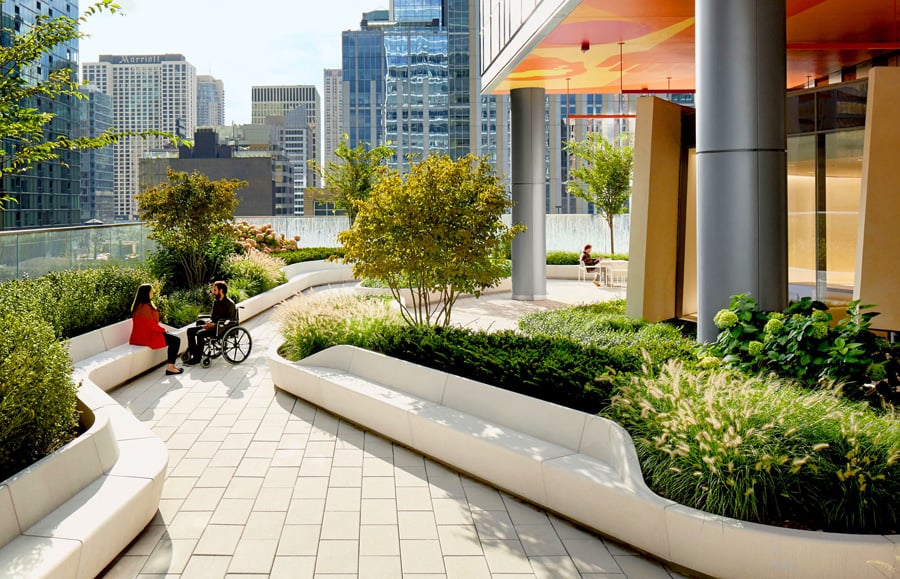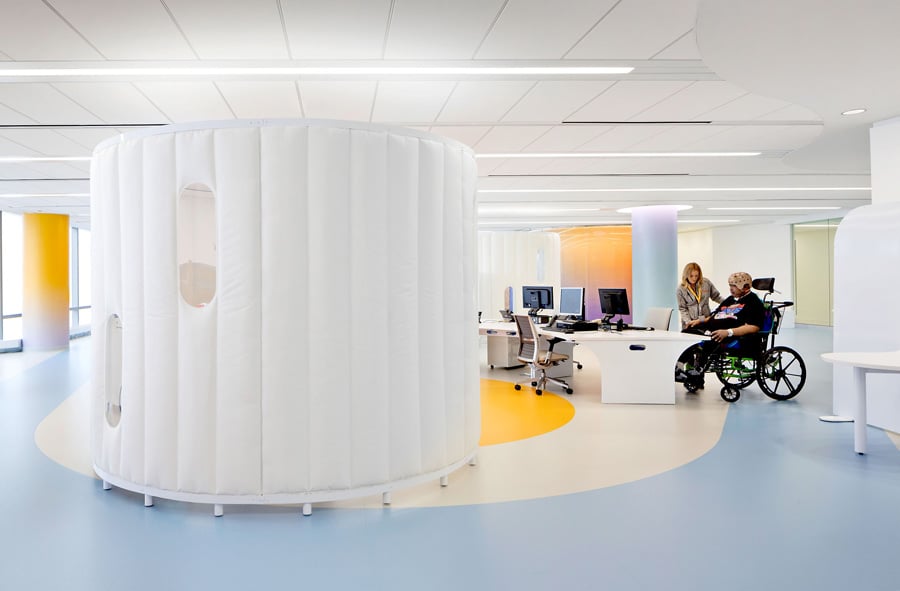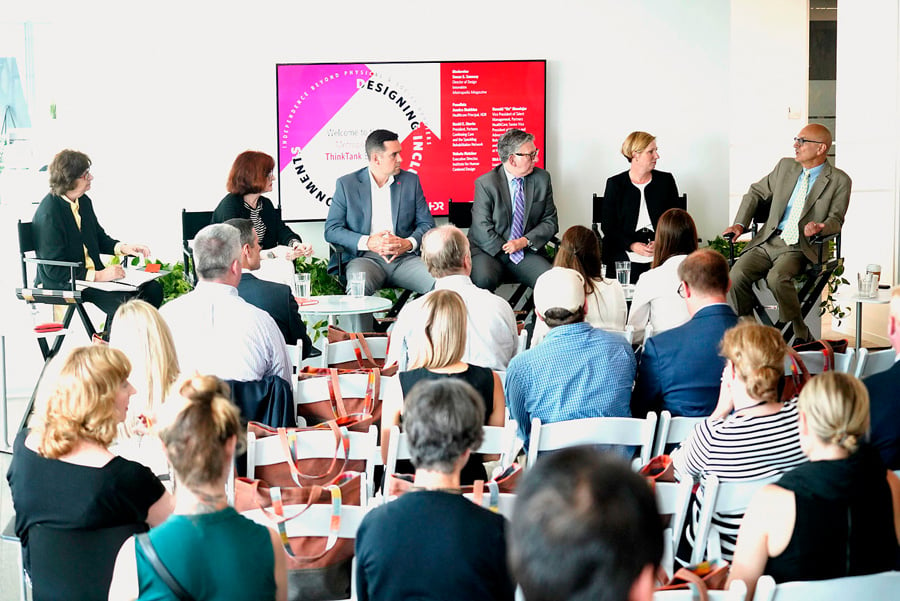
October 12, 2018
Architects on How the Profession Can Design Inclusive Healthcare Facilities
Metropolis’s latest Think Tank event, held at the Boston offices of HDR, addressed how architecture and design professionals can design for humanity.

“Design for humanity!”
That was the plea of moderator Susan S. Szenasy, director of design innovation at Metropolis, during a freewheeling hour-long panel discussion at HDR’s Boston offices in early August.
But it is humanity in all its forms that concerns Szenasy, hence the title of the panel: “Designing Inclusive Environments: Independence Beyond Social Barriers.”
“The passing of the Americans with Disabilities Act [ADA] was a victory,” she said. “We thought everything was on its way. But it’s not.” We’re still stuck on the ideal of the able 18-year-old white male as the muse for architecture, Szenasy insisted. “That can’t be the standard anymore.”
Panelist David E. Storto, as president of Partners Continuing Care and the Spaulding Rehabilitation Network, oversees 25 outpatient centers and one long-term acute-care hospital in eastern Massachusetts and is therefore able to have a profound impact on accessibility and inclusion. In 2013 he oversaw the completion of one of the most advanced accessible facilities in the country: Spaulding Rehabilitation Hospital in Boston’s Charlestown neighborhood.
“Our ADA requirements were the floor of what we wanted to achieve at Spaulding,” Storto recalled. “We wanted to be aspirational in being the top accessible facility anywhere.”

Adding a valuable perspective to the panel was Oz Mondejar, vice president of talent management at Partners HealthCare and disabled himself. It’s all about recognition and economic power, Mondejar said: “I am a consumer. I bring my whole self to work. And I bring my money to where I’m welcome.”
But Szenasy objected to this or any other siloization, saying, “There has to be a language that designers are on the side of humanity and not dividing people between the abled and the disabled.”
By the same token, explained Jessica Stebbins, IIDA, a health-care principal at HDR who helped design the Spaulding hospital, treating the disabled as equal citizens, rather than relegating them to the back (or side) door, is at the core of ADA and accessibility issues. Moreover, she continued, designers must create spaces that facilitate social engagement among diverse groups.
“For example,” Stebbins said, “at Spaulding we designed spaces where patients could socialize with family members and friends. It allows emotionally reticent patients to experience the sea breeze and views while connecting with their loved ones.”
All of the panelists agreed on the benefits of engaging people with disabilities. “The kind of design we’ve been talking about is economical,” noted Valerie Fletcher, executive director of the Institute for Human Centered Design. “It saves money in the long run.”
Fletcher ended on a somewhat positive note—the United States is ahead of other developed countries in accommodation and inclusion of the disabled, she reported.
“But is it perfect?” she asked. “Far from it.”
The Think Tank discussions in Boston were held on August 8 and 9. The conversations were presented in partnership with Autodesk, Dormakaba, DXV/GROHE, Sunbrella, and Wilsonart.
You might also like, “6 Things We Learned When Designing for People with Disabilities.”








